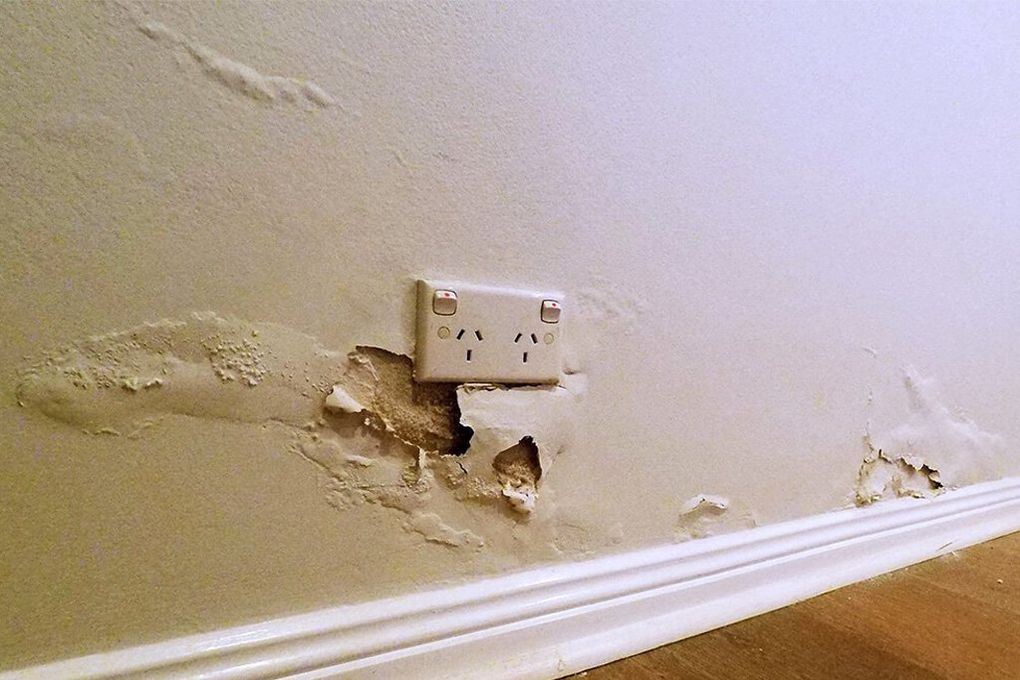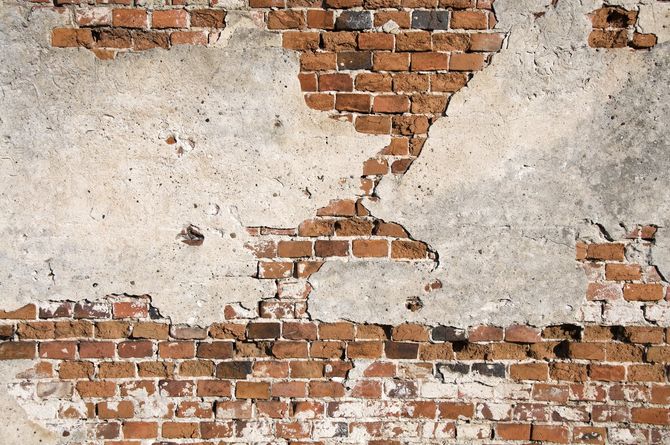Rising damp
Rising damp, also called capillary ascending moisture, is one of the most widespread forms of damp and affects both old and new buildings when the insulation system is missing, ineffective or damaged.
Due to the capillarity, the moisture rises up from the foundations and manifests itself in the lower part of the walls.
The degree of rising damp depends on the presence of water in the subsoil, the porosity and absorbency of building materials, and weather and seasonal phenomena (the level of moisture can increase in cold or rainy months, due to the lack of evaporation).

How is it formed?
Have you ever seen a sponge absorbing water? The same applies to the various building materials. Water diffusion
inside of building materials is stimulated by a particular characteristic: porosity.
In other words, the porosity of a material refers to its ability to absorb water successfully: a physical phenomenon known as 'capillarity'.
The diameter of the capillaries plays an important role in the rising of the liquid: the thinner the capillaries the greater the ascent and vice versa. The effects of this phenomenon are: damp spots of variable heights, ranging from a few centimetres to a few metres, and consequent degradation and damage to the plaster and interior and exterior walls.
How does it work?
The salts carried by the water are deposited at different heights; the saline products are absorbed by the porosity of the material, crystallising and causing considerable internal pressure.
Consequently, the surface of the bricks is corroded, the mortar joints are degraded, parts of the plaster become detached and the mechanical attributes of the materials are reduced.
What damage does it cause?

STRUCTURAL DAMAGES
The salts within the soil and building materials dissolve in the water and rise to the surface by way of the capillary effect.
While the water evaporates the salt remains in the plaster. The salt, once crystallised, increases up to 12 times in volume, causing it to push outwards towards the plaster and building material.
The plaster comes off and so does part of the wall material.
Overtime, degradation will occur and static structures will be weakened.
The salts within the soil and building materials dissolve in the water and rise to the surface by way of the capillary effect.
While the water evaporates the salt remains in the plaster. The salt, once crystallised, increases up to 12 times in volume, causing it to push outwards towards the plaster and building material.
The plaster comes off and so does part of the wall material.
Overtime, degradation will occur and static structures will be weakened.

AESTHETIC DAMAGE
Spots and rings of moisture, mould, peeling plaster, flaking paint, salt efflorescence, ruined wooden furniture and structures, and, in the worst cases, the detachment of the plaster caused by the emerging salts.
DAMAGE TO HEALTH
Health risks include eye, skin and throat irritation; allergic or immunological reactions, such as rhinitis, eczema, erythema, colds, conjunctivitis, gastro-intestinal disorders, joint pain and arthritis; neurological reactions such as migraines and headaches, vertigo, tiredness and depression; and irritation of the respiratory tract that can become chronic, turning into bronchitis and asthma.
Health risks include eye, skin and throat irritation; allergic or immunological reactions, such as rhinitis, eczema, erythema, colds, conjunctivitis, gastro-intestinal disorders, joint pain and arthritis; neurological reactions such as migraines and headaches, vertigo, tiredness and depression; and irritation of the respiratory tract that can become chronic, turning into bronchitis and asthma.

ECONOMIC DAMAGES
Excessive heating costs (due to the cold walls causing evaporation).
Everyday use of dehumidifiers. Constant resurfacing of plaster, paint, wooden floors, damaged furniture and upholstery. The disuse of damp areas.
Excessive heating costs (due to the cold walls causing evaporation).
Everyday use of dehumidifiers. Constant resurfacing of plaster, paint, wooden floors, damaged furniture and upholstery. The disuse of damp areas.







